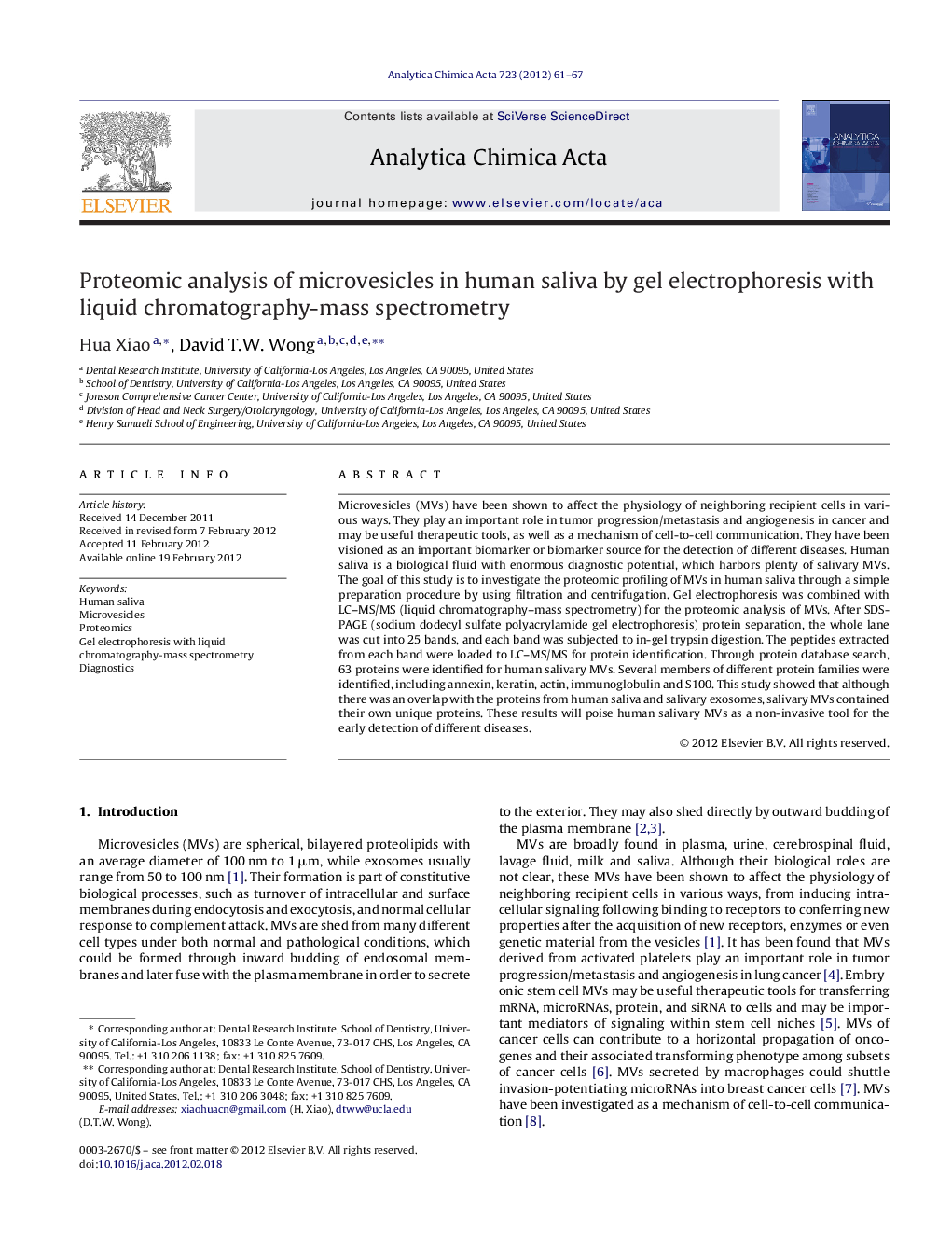| Article ID | Journal | Published Year | Pages | File Type |
|---|---|---|---|---|
| 1166773 | Analytica Chimica Acta | 2012 | 7 Pages |
Microvesicles (MVs) have been shown to affect the physiology of neighboring recipient cells in various ways. They play an important role in tumor progression/metastasis and angiogenesis in cancer and may be useful therapeutic tools, as well as a mechanism of cell-to-cell communication. They have been visioned as an important biomarker or biomarker source for the detection of different diseases. Human saliva is a biological fluid with enormous diagnostic potential, which harbors plenty of salivary MVs. The goal of this study is to investigate the proteomic profiling of MVs in human saliva through a simple preparation procedure by using filtration and centrifugation. Gel electrophoresis was combined with LC–MS/MS (liquid chromatography–mass spectrometry) for the proteomic analysis of MVs. After SDS-PAGE (sodium dodecyl sulfate polyacrylamide gel electrophoresis) protein separation, the whole lane was cut into 25 bands, and each band was subjected to in-gel trypsin digestion. The peptides extracted from each band were loaded to LC–MS/MS for protein identification. Through protein database search, 63 proteins were identified for human salivary MVs. Several members of different protein families were identified, including annexin, keratin, actin, immunoglobulin and S100. This study showed that although there was an overlap with the proteins from human saliva and salivary exosomes, salivary MVs contained their own unique proteins. These results will poise human salivary MVs as a non-invasive tool for the early detection of different diseases.
Graphical abstractFigure optionsDownload full-size imageDownload as PowerPoint slideHighlights► We developed a simple method for the preparation of salivary microvesicles. ► GeLC–MS/MS was used for the proteomic analysis of salivary microvesicles. ► There are 63 proteins were identified and 35 are unique to salivary microvesicles.
